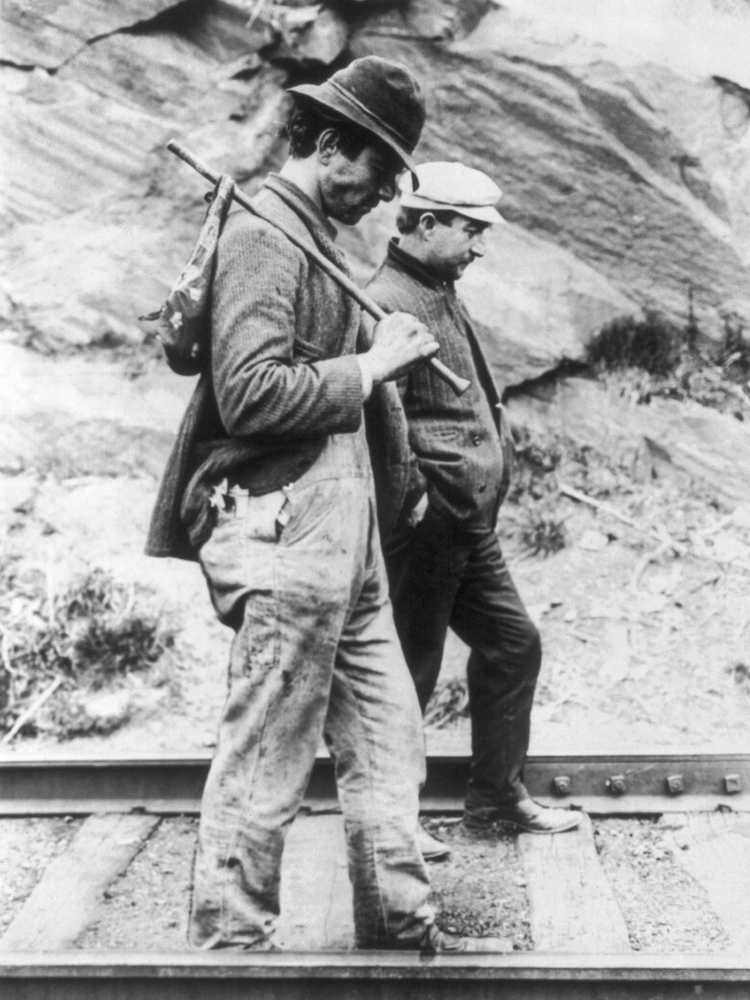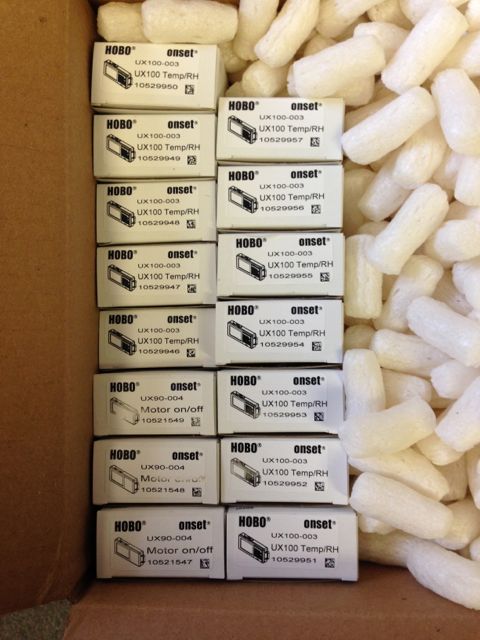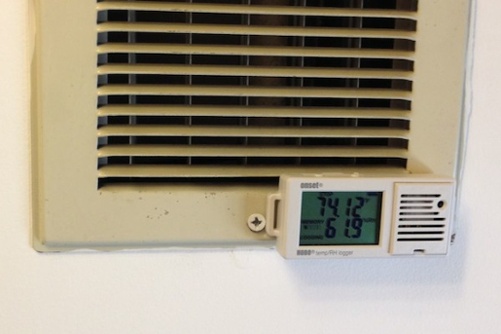Hobos in the House – Let the Data Logging Games Begin!

 This week we got a box full of hobos delivered to the world headquarters of Energy Vanguard. Well, OK, they weren’t the kind of hobos you see at left but actually HOBOs, the data loggers made by Onset, as you see below. Now, the fun begins. Jeffrey, Andy, and I have just started a friendly competition. And I’m planning to crush them!
This week we got a box full of hobos delivered to the world headquarters of Energy Vanguard. Well, OK, they weren’t the kind of hobos you see at left but actually HOBOs, the data loggers made by Onset, as you see below. Now, the fun begins. Jeffrey, Andy, and I have just started a friendly competition. And I’m planning to crush them!
This week we got a box full of hobos delivered to the world headquarters of Energy Vanguard. Well, OK, they weren’t the kind of hobos you see at left but actually HOBOs, the data loggers made by Onset, as you see below. Now, the fun begins. Jeffrey, Andy, and I have just started a friendly competition. And I’m planning to crush them!
Of course, they’re planning to crush me, too. We don’t really have rules, though, other than whoever writes up the most interesting report of their data wins. Or is it whoever has the most interesting data?
Well, that’s immaterial at this point. We all three have taken our 5 data loggers home, and I deployed mine on the first night. They’ve already amassed about 60 hours of data.
In case you’re wondering about the types of data loggers we’re using, we each have four that measure temperature and relative humidity (UX100-003) and one that measures motor runtime (UX90-004). I don’t know if you can read the labels below, but that’s what we have.

I’ve wanted to do this for a long time but when you’re running a cash-strapped new business, it’s hard to justify buying data loggers (much less convince your spouse that buying them is more important than paying yourself). When I went to the Dry Climate Forum in California earlier this year, I knew I couldn’t put it off much longer. Those guys are absolute zealots about data. In fact, their most important rule for giving a presentation there is that if you talk about modeling, you won’t be invited back.
So now we’ve finally got our data loggers and are going to do great things with them. I’ve got all kinds of questions that I hope to get answers to with these things. Like…oh, wait. I can’t tell you because I’m not sure I can trust you to keep it secret from Jeffrey and Andy. I don’t want them stealing my good ideas!
Oh, OK, I’ll let you know just this one and see if you can keep quiet about it. I live in a crappy 44 year old condo, and the master bath doesn’t have a bath fan. I’m going to monitor what happens with all that moisture generated every time I take a shower. That’s all I’m saying about it for now. (And speaking of showers, check out the data logging Mike MacFarland does in his.)

One thing I wish more people knew about, however, is how to present data clearly and efficiently. I read a lot of reports and see a lot of data. Most of it could be presented with greater clarity.
It’s easy to be overwhelmed by data, especially if you’re not a real quantitative person, and that’s unfortunate because whether you’re a numbers person or not, your life is greatly affected by numbers. My pledge to you here is that when we show the results of our data logging experiments, we’ll show them as clearly as possible. I can’t promise that they’ll be as clear and beautiful as these Sankey diagrams showing energy flows in the US, but we’ll do our best.
Now, let the data logging games begin!
Related Articles
Confessions of a Building Science Zealot
How Accurate Is REM/Rate as an Energy Modeling Tool?
US Energy Flows — Inputs and Outputs 1995 to 2010
Total Energy Use Down in US, Wind & Solar Up
Photo of hobos on train track in the public domain, from Wikimedia Commons.
NOTE: Comments are moderated. Your comment will not appear below until approved.
This Post Has 8 Comments
Comments are closed.

I am happy to hear of your
I am happy to hear of your data logging.
I love these things. You’re
I love these things. You’re right that getting around to actually spending the money can take some effort, even though they are not really that expensive.
I’ve only got a couple of the new ones ’cause the old ones keep working. I bought most of mine several years ago from a company that couldn’t figure out how to interpret the data. I charged them to do that and then talked them into selling me the loggers at a very reasonable price.
When you are reading the data it’s important to remember that usually the data is going to look mostly boring. What you’re looking for are the subtle anomalies over long periods. Frankly, using data loggers to find gross and obvious faults isn’t their strong suit. It can be useful to provide documentation in those cases though.
Choosing the right combination of loggers is important as well. In out business most will find the temp/humidity units will be their bread and butter. But the motor and electrical monitoring loggers can really help you sort out some vexing problems too.
Just be aware that some of the electrical monitoring units are going to require you to access electric distribution panels. Know your local laws and your own abilities (realistically) before you attempt that.
My HOBOs were deployed last
My HOBOs were deployed last night at 11:00 in my 1927 (we’ll just say, “energy challenged”) bungalow.
Game On!
As an Ind. Eng., I better be pretty good with the data analysis part. I sadly enjoy staying up late with a nice data set and trying to come up with a Freakonomics-type data correlation.
It’s the whole pretty, succinct presentation thing that always gets me.
One application which might
One application which might be enlightening is runtime of heating and air conditioning systems. I used temp-only loggers (a cheaper brand) and could figure out that one AC system was about 3X larger than really required.
Eager to hear your study of the master bath with no exhaust fan. One function is just “fart fan” and I suppose you must open a window for that function. A second function is removing humidity from the bath, any way to get a few ACH (air changes per hour) will address that. Circulation from the HVAC system may do an adequate job there.
Data is…, well, just data.
Data is…, well, just data. Knowledge comes from interpretation.
This, among other reasons, is
This, among other reasons, is why I love the Energy Vanguard blog. You keep taking on subjects like this one that I really dig! 🙂
Last week I installed an Ecobee thermostat in my home. This unit is one data logging animal: indoor temp, indoor humidity, fan run time, cooling and heating stage run time, outdoor temp, etc. Using the web portal, you can download Excel spreadsheets of the stat’s data and get super granular with it. Perhaps a thermostat like this would dovetail nicely with your Hobo loggers recording spot conditions like your bathrooms, etc.
Now I want to get some of those Hobos…I’ve used them in the past and they are very good, durable loggers. I’ll look forward to seeing your data and your intepretation of it.
Hi Allison,
Hi Allison,
Great to see you experimenting with dataloggers…this is one of my favorite subjects!
I’m currently directing the restoration of an 18th century museum home, and I’ve been using dataloggers since last November to monitor interior humidification and temperature levels, and also determine how the building enclosure passively responds to changing outdoor conditions. These things are important to us, not only from the standpoint of the home’s own durability, but also how well the house is functioning as a storage environment for our historic collections.
Back in early November, I’d instrumented the house with Extech USB dataloggers. They’re a bit less expensive than the HOBOS, but they work reasonably well. I have one in each major interior space (cellar, 1st flr, 2nd flr, attic), plus a datalogger outside in a reasonably protected location (a woodshed), that’s otherwise directly exposed to outside air.
What’s lacking from the manufacturer is a way of running these devices in a coordinated fashion, as well as adequate data reduction and analysis software. So, I’ve developed my own protocols for both, and implemented a data reduction and reporting solution using an Excel spreadsheet, combined with the visual RH/T/DPT curves generated by the manufacturer’s provided software.
I’m also using the Image Permanence Institute’s (the same people who developed your favorite online dew point calculator) time-weighted preservation metrics and database to do longer term analyses on the collected data, so we can estimate the longer term effects that our current enclosure has on our stored collections.
Once we’ve collected a full year’s worth of data and analysis metrics, we’ll have a complete characterization of the enclosure’s behavior over the course of all four seasons, which will, in part, help us set measurable objectives for improving the interior environment.
We’ll also continue to monitor the interior environment as we head into our restoration work, so we’ll understand what incremental effects our efforts are having on the enclosure, and whether we’re moving closer to our environmental objectives.
I’m happy to share a report I’ve written for my board of directors about this process with you, Andy, and Jeffrey, as long as you guys promise to play nice with each other and not use it for opponent-crushing. Also, you have to promise not to disclose my report beyond yourselves. In time, I hope to make this a full-blown publication for public consumption, but will need permission from my board to do that.
Have fun with your dataloggers, boys, and behave!
~ John
New to this blog and forum,
New to this blog and forum, and thrilled that you are on to this topic. I am reminded of quality guru Deming and just re-read the wikipedia page: http://en.wikipedia.org/wiki/W._Edwards_Deming
he’s big on measurements as an essential part of discovery and management part all leading toward quality.
Allison, please consider creating blog tags for smart devices like thermostats and meters and tags for logging and analysis.
John Poole, please consider publishing your goals and results for the project and sharing your analysis tools.
lastly, I hope to invest in a couple of logging devices as part of my tool kit. thanks so much for this blog post on data logging.